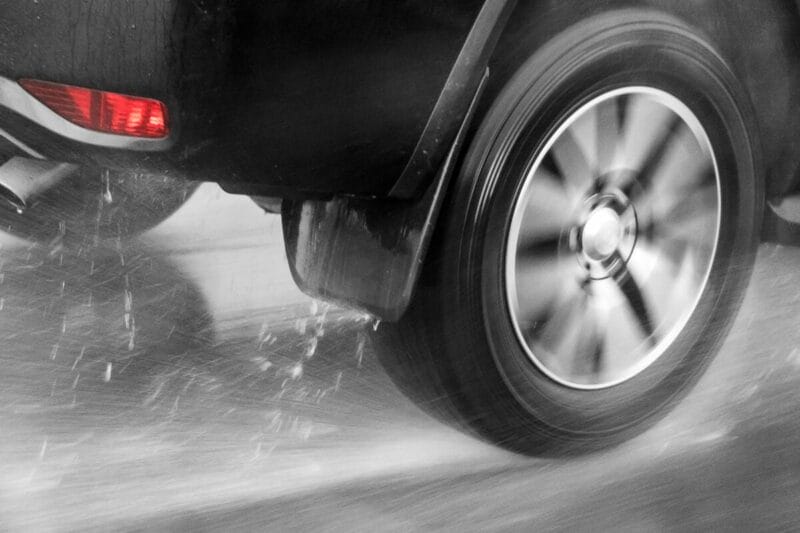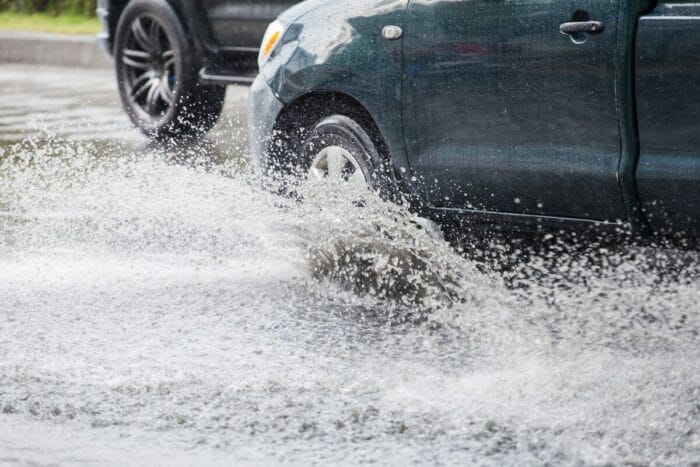How to Avoid Hydroplaning?
What is hydroplaning?
Hydroplaning, also known as aquaplaning, occurs when a layer of water builds up between the tires of a vehicle and the road surface, leading to a loss of traction. This can result in the driver losing control of the vehicle, posing a significant safety risk. Driving slower is one of the ways people know how to avoid hydroplaning but there are other things you should know as well.
The science behind hydroplaning
The science behind hydroplaning is relatively straightforward. When driving in wet conditions, the water on the road surface can accumulate faster than the tires can disperse it. This causes the tires to lose contact with the road, leading to hydroplaning.

Causes of hydroplaning
Several factors can contribute to hydroplaning, including:
- Tire tread depth: Worn-out tires with shallow tread depth are more prone to hydroplaning as they are unable to channel water away effectively.
- Speed: Driving at high speeds increases the likelihood of hydroplaning as the tires may be unable to disperse water quickly enough.
- Road surface: Roads with poor drainage or standing water are prime conditions for hydroplaning to occur.
Tips for Preventing Hydroplaning
Proper tire maintenance
Regularly check your tire tread depth and ensure that your tires are properly inflated. Consider investing in tires designed to disperse water effectively, reducing the risk of hydroplaning.
Adjusting driving behavior in wet conditions
When driving in wet conditions, it’s essential to adjust your behavior accordingly. This includes reducing your speed, increasing following distances, and avoiding sudden maneuvers such as sharp turns or hard braking.
Understanding road conditions
Be mindful of road conditions, especially during or after heavy rainfall. Look out for areas with standing water and try to avoid driving through them if possible.
Techniques for Maintaining Control in Wet Conditions
How to react when hydroplaning occurs
If you find yourself hydroplaning, it’s crucial to remain calm. Avoid sudden movements and gently ease off the accelerator to allow the tires to regain traction. Do not slam on the brakes, as this can further destabilize the vehicle.
Steering and braking techniques
When driving in wet conditions, it’s important to maintain a light grip on the steering wheel and avoid sudden or aggressive maneuvers. If your vehicle is equipped with an ABS (anti-lock braking system), allow the system to pump the brakes for you to maintain control.
Importance of maintaining a safe speed
Reducing your speed in wet conditions is one of the most effective ways to prevent hydroplaning. Driving at a safe and appropriate speed allows your tires to disperse water more effectively, reducing the risk of losing traction.

Additional Safety Measures for Wet Weather Driving
Importance of visibility
Ensure that your vehicle’s headlights, taillights, and windshield wipers are in good working condition to maintain visibility in adverse weather conditions.
Importance of proper vehicle maintenance
Regular maintenance, including checking and replacing worn-out wiper blades and ensuring proper functioning of defogging systems, is crucial for safe driving in adverse weather conditions.
Precautions for driving in heavy rain or standing water
In heavy rain or when encountering standing water on the road, exercise caution and consider pulling over in a safe location until conditions improve. If it’s necessary to drive through standing water, proceed slowly and steadily to minimize the risk of hydroplaning.
By understanding the science behind hydroplaning, implementing preventative measures, and practicing techniques for maintaining control in wet conditions, drivers can significantly reduce the risk of hydroplaning and ensure a safer driving experience in adverse weather conditions. If you need repairs done for your vehicle or if you want more tips be sure to schedule service and check out our blog.

 Find a Location Near You
Find a Location Near You
